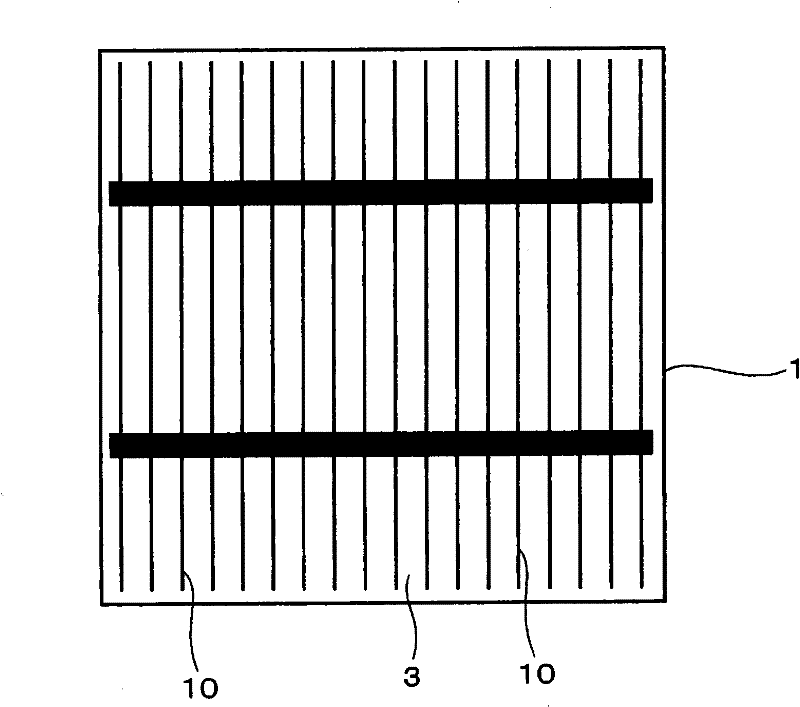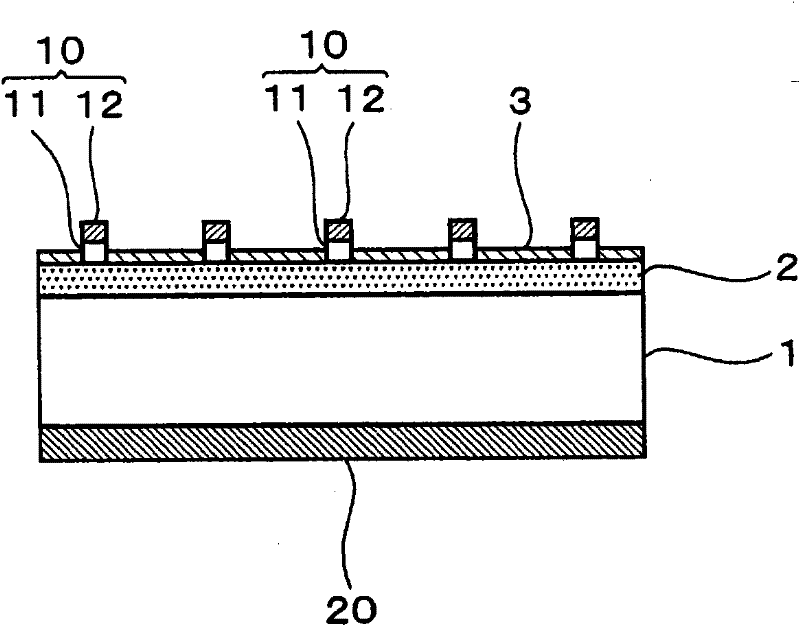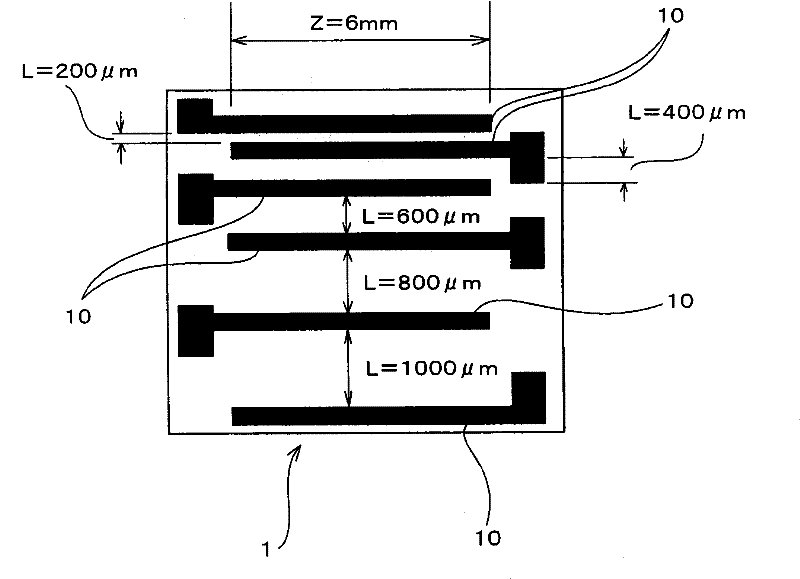Ag electrode paste, solar battery cell, and process for producing the solar battery cell
A technology for electrode paste and solar cells, applied to electrical components, conductive materials dispersed in non-conductive inorganic materials, circuits, etc., can solve problems such as air bubbles, hinder welding wettability, and fail to point out the actual situation, and achieve good results Ohmic contact, high conversion efficiency, and the effect of reducing line resistance
- Summary
- Abstract
- Description
- Claims
- Application Information
AI Technical Summary
Problems solved by technology
Method used
Image
Examples
Embodiment 1
[0116] The embodiments of the invention of the present application are disclosed below, and the features of the present invention are further described in detail.
[0117]
[0118] 100 parts by weight of Ag particles, 2.5 parts by weight of lead-free glass frit shown in Table 1, and 20 parts by weight of organic carrier in which ethyl cellulose is dissolved in terpineol are mixed, and after fully mixing, they are passed through three roller mills The kneading process is performed, and then, the second Ag electrode slurry for forming the second electrode is prepared by degassing under reduced pressure. In addition, the lead-free glass frits of sample numbers 1 to 9 in Table 1 are lead-free glass frits satisfying the requirements of the present invention, and the sample numbers 10 to 18 are lead-free glass frits of comparative examples that do not satisfy the requirements of the present invention.
[0119] [Table 1]
[0120]
[0121] In addition, as the first Ag electrode paste for fo...
PUM
 Login to View More
Login to View More Abstract
Description
Claims
Application Information
 Login to View More
Login to View More - R&D
- Intellectual Property
- Life Sciences
- Materials
- Tech Scout
- Unparalleled Data Quality
- Higher Quality Content
- 60% Fewer Hallucinations
Browse by: Latest US Patents, China's latest patents, Technical Efficacy Thesaurus, Application Domain, Technology Topic, Popular Technical Reports.
© 2025 PatSnap. All rights reserved.Legal|Privacy policy|Modern Slavery Act Transparency Statement|Sitemap|About US| Contact US: help@patsnap.com



